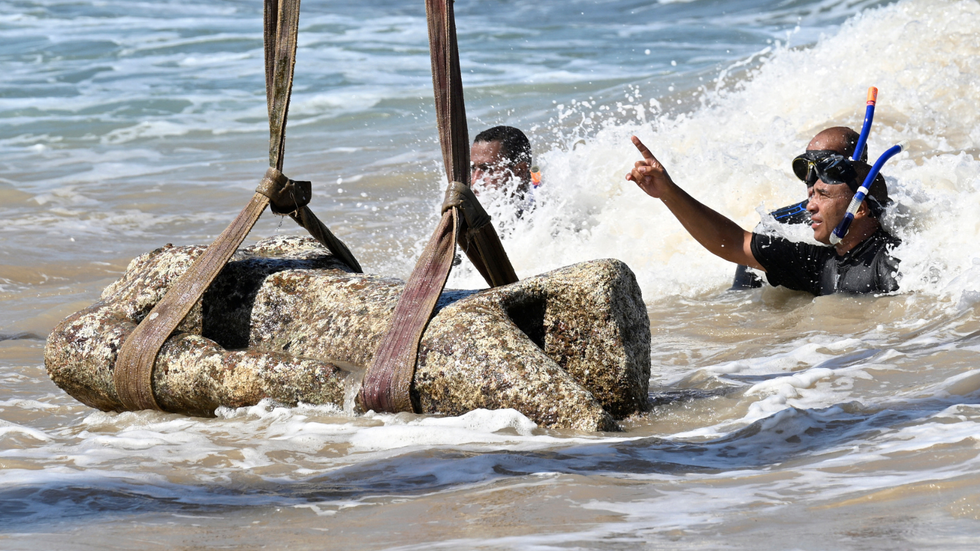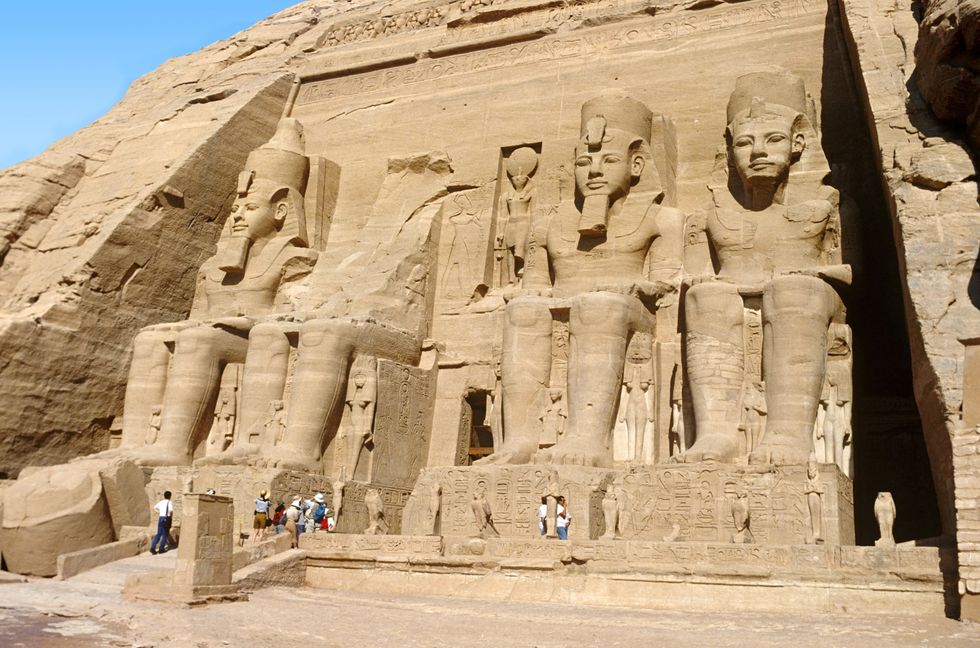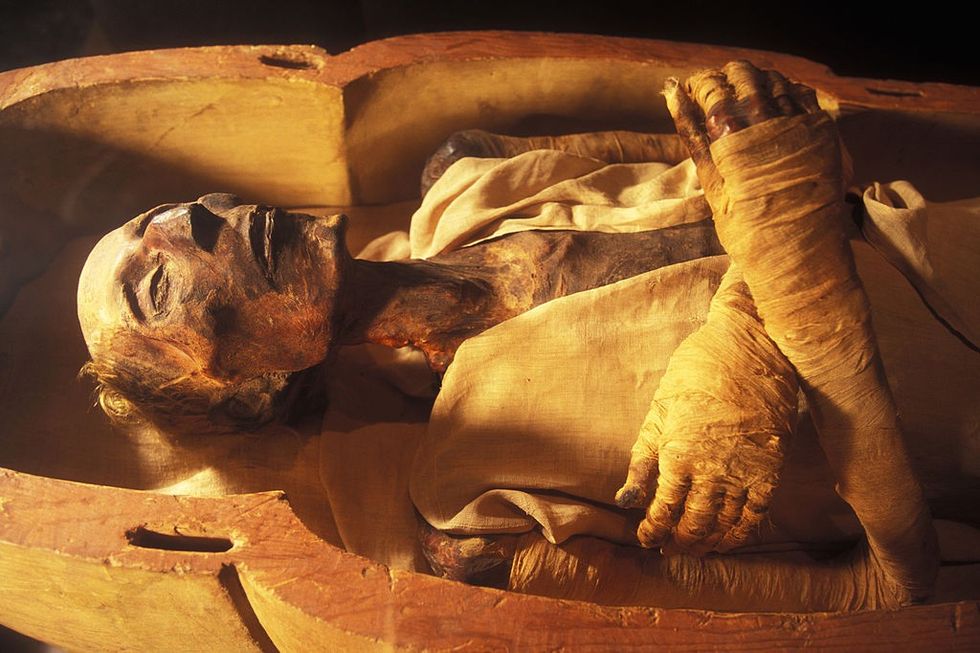Archaeologists stunned as 'biblical' 2,000-year-old sunken city emerges from sea
A colossal quartzite sphinx inscribed with the cartouche of Ramesses II was discovered below the waves
Don't Miss
Most Read
Archaeologists have been left stunned by a trove of ancient artefacts discovered in a sunken city off the coast of Egypt.
The excavation site in Abu Qir Bay, close to modern Alexandria, is believed to be the ancient seaport of Canopus.
For many, the most important artifact discovered was a colossal quartzite sphinx which was inscribed with the cartouche or seal of Ramesses II.
**ARE YOU READING THIS ON OUR APP? DOWNLOAD NOW FOR THE BEST GB NEWS EXPERIENCE**

Archaeologists have been left stunned by a trove of ancient artifacts discovered in a sunken city off the coast of Egypt
|GETTY
Some historians believe Ramesses II was the pharaoh mentioned in the biblical Exodus story, when Moses led the Israelites out of Egypt.
He lived from 1279 - 1213 BC, and had the second longest reign in Egyptian history.
This timing aligns with the story of Exodus, which many scholars believe to be set in the 13th century BC.
LATEST IN ARCHAEOLOGY:

The Temple of Ramesses II has been largely affected by changing water levels
|GETTY
Historians place the story at this time because there is a significant lack of evidence for an Israelite presence in the area before that time period, such as place names in the Torah and the mentioning of certain materials.
And Canopus is not the only site relating to Ramesses II which has been affected by rising waters.
The Temple of Ramesses II, referring to Abu Simbel, the site of two temples built by the Pharoah at the southern frontier of Egypt, facing Nubia, has been largely affected by changing water levels.
In the 1960s, through complex engineering, the temples were saved from the rising waters of the River Nile which were caused by the creation of the Aswan High Dam.
 The mummy of Ramses II | Getty
The mummy of Ramses II | GettyUnesco relocated the monument atop an artificial cliff, 64 metres above the old site and 180 metres in land.
Last year, archaeologists discovered a former military barracks linked to Ramesses II.
This excavation unearthed religious tributes and a bronze sword inscribed with the name of the Pharoah within the barracks.
The sword is believed to have once belonged to a high-ranking officer and served as a symbol of Ramesses' great power and generosity.
Peter Brand, a historian at the University of Memphis, said: "The king's name and titles engraved on it increased the prestige of its owner and 'advertised' the king's wealth, power, and generosity."










